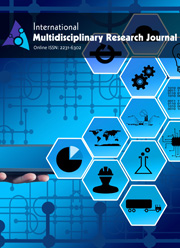Equity in HIV/AIDS management and prophylaxis: How free is the free ART program in India?
DOI:
https://doi.org/10.25081/imrj.2023.v13.8052Keywords:
Health equity, People living with HIV/AIDS, Antiretroviral Therapy (ART)Abstract
The concern for most public health policies and decision-makers is the equitable distribution of the nation’s healthcare resources. Also, in the public health care system, the primary aim is assuaging the burden of the disease. This study captures and evaluates some important health equity aspects with its relevance with the ART (Antiretroviral Therapy) program in India. The study is an exploratory and descriptive study based on secondary data. The sources of secondary data are published official reports from NACO (National AIDS Control Organization), United Nations AIDS Program (UNAIDS), World Health Organization (WHO) etc. The roll-out of the ART program in 2004 by the Govt. of India made a paradigm shift in the HIV/AIDS scenario in the country. “The adult HIV prevalence at the national level has continued its steady decline from an estimated level of 0.41% in 2001 through 0.35% in 2006 to 0.27% in 2011”. Equity in plain words means fairness. In the sense of health policy and HIV/AIDS studies, the reduction in prevalence rate equates to positive health equity. The enervation of HIV infection by taking ART drugs had helped in curbing the prevalence and the fact that it is provided free of cost has proven this program to be the epitome of distributive justice in public health.
Downloads
References
Banerjee, A. V., & Duflo, E. (2011). Poor Economics: Rethinking poverty and the ways to end it. London, UK: Penguin Books.
Centers for Disease Control and Prevention. (2018a). Preexposure Prophylaxis for the Prevention of HIV Infection in the United States - 2017 Update - A Clinical Practice Guideline. US Public Health Service. Retrieved from https://www.cdc.gov/hiv/pdf/risk/prep/cdc-hiv-prep-guidelines-2017.pdf
Centers for Disease Control and Prevention. (2018b). Preexposure Prophylaxis for the Prevention of HIV Infection in the United States - 2017 Update - Clinical Providers’ Supplement. US Public Health Service. Retrieved from https://www.cdc.gov/hiv/pdf/risk/prep/cdc-hiv-prep-provider-supplement-2017.pdf
NACO. (2018). National Technical Guidelines on Anti Retroviral Treatment. Retrieved from https://lms.naco.gov.in/frontend/content/NACO%20%20National%20Technical%20Guidelines%20on%20ART_October%202018%20(1).pdf
NACO & ICMR. (2020). National AIDS Control Organization & ICMR-National Institute of Medical Statistics (2020). India HIV Estimates 2019 Report. New Delhi: NACO, Ministry of Health and Family Welfare, Government of India. Retrieved from https://tnsacs.in/cmsimage//Reports/01102020121007.pdf
UNAIDS. (2020). United Nations AIDS (UNAIDS) data 2020. Retrieved from https://www.unaids.org/en/resources/documents/2020/unaids-data
Published
How to Cite
Issue
Section
Copyright (c) 2023 Koko Wangjam, Naresh Kumar Sharma

This work is licensed under a Creative Commons Attribution-NonCommercial-NoDerivatives 4.0 International License.



 .
.